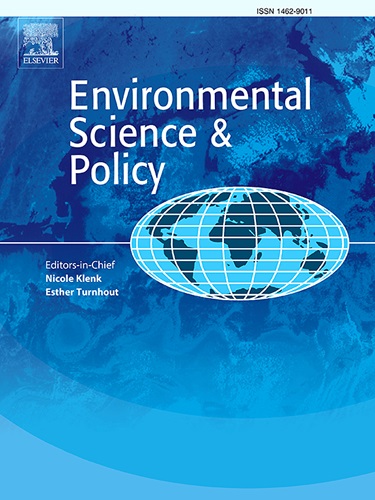Accessibility analysis and optimization strategies of green spaces for enhancing climate resilience: Equity-oriented insights from megacities
IF 5.2
2区 环境科学与生态学
Q1 ENVIRONMENTAL SCIENCES
引用次数: 0
Abstract
With the rapid growth of urban populations, disparities in green space allocation have become more evident. As critical components of green space, parks play a vital role in mitigating climate risks and supporting residents’ physical and mental well-being. However, in rapidly expanding megacities, spatial and social inequities in park accessibility hinder green space from fully delivering its climate adaptation functions. This paper develops a framework for social equity in access to urban parks in megacities, providing a practical tool to guide equitable and climate-resilient urban green space planning. Using residential buildings as the unit of analysis, park equity among different population groups was assessed based on the three transportation modes of walking, cycling and public transportation. The results showed that 1) The park coverage is 70.82 %, with a Gini coefficient of 0.3547, indicating inadequate coverage and localized disparities; 2) Significant variations in equity exist across the three transportation modes. As residents’ mobility options improve (from walking to public transportation), their activity range expands, increasing park access opportunities; 3) The Gini Coefficient reveals pronounced inequities among vulnerable groups, with the elderly experiencing greater disparities in resource allocation, especially in urban centers where they are concentrated. 4) Areas with dense populations and limited park accessibility show higher land surface temperatures (LSTs), reflecting reduced heat resilience and limited capacity to alleviate the heat island effect. This demonstrates that equitable access to urban parks plays a key role in strengthening local climate resilience.
提高气候适应能力的绿色空间可达性分析与优化策略:来自特大城市的公平导向见解
随着城市人口的快速增长,城市绿地配置的差异日益明显。公园作为绿色空间的重要组成部分,在缓解气候风险和支持居民身心健康方面发挥着至关重要的作用。然而,在快速扩张的特大城市中,公园可达性的空间和社会不平等阻碍了绿色空间充分发挥其气候适应功能。本文开发了一个超大城市城市公园使用的社会公平框架,为指导公平和气候适应型城市绿地规划提供了实用工具。以居住建筑为分析单元,基于步行、骑行和公共交通三种交通方式,对不同人群之间的公园公平性进行了评估。结果表明:1)公园盖度为70.82 %,基尼系数为0.3547,表明公园盖度不足,存在局部性差异;2)三种交通方式的公平性存在显著差异。随着居民出行选择的改善(从步行到公共交通),他们的活动范围扩大了,增加了进入公园的机会;③基尼系数显示弱势群体之间的不平等现象明显,老年人在资源分配上的差距更大,尤其是在老年人集中的城市中心。④人口密集、公园可达性有限的地区地表温度较高,反映出热恢复能力较差,缓解热岛效应的能力有限。这表明,公平使用城市公园在加强当地气候适应能力方面发挥着关键作用。
本文章由计算机程序翻译,如有差异,请以英文原文为准。
求助全文
约1分钟内获得全文
求助全文
来源期刊

Environmental Science & Policy
环境科学-环境科学
CiteScore
10.90
自引率
8.30%
发文量
332
审稿时长
68 days
期刊介绍:
Environmental Science & Policy promotes communication among government, business and industry, academia, and non-governmental organisations who are instrumental in the solution of environmental problems. It also seeks to advance interdisciplinary research of policy relevance on environmental issues such as climate change, biodiversity, environmental pollution and wastes, renewable and non-renewable natural resources, sustainability, and the interactions among these issues. The journal emphasises the linkages between these environmental issues and social and economic issues such as production, transport, consumption, growth, demographic changes, well-being, and health. However, the subject coverage will not be restricted to these issues and the introduction of new dimensions will be encouraged.
 求助内容:
求助内容: 应助结果提醒方式:
应助结果提醒方式:


